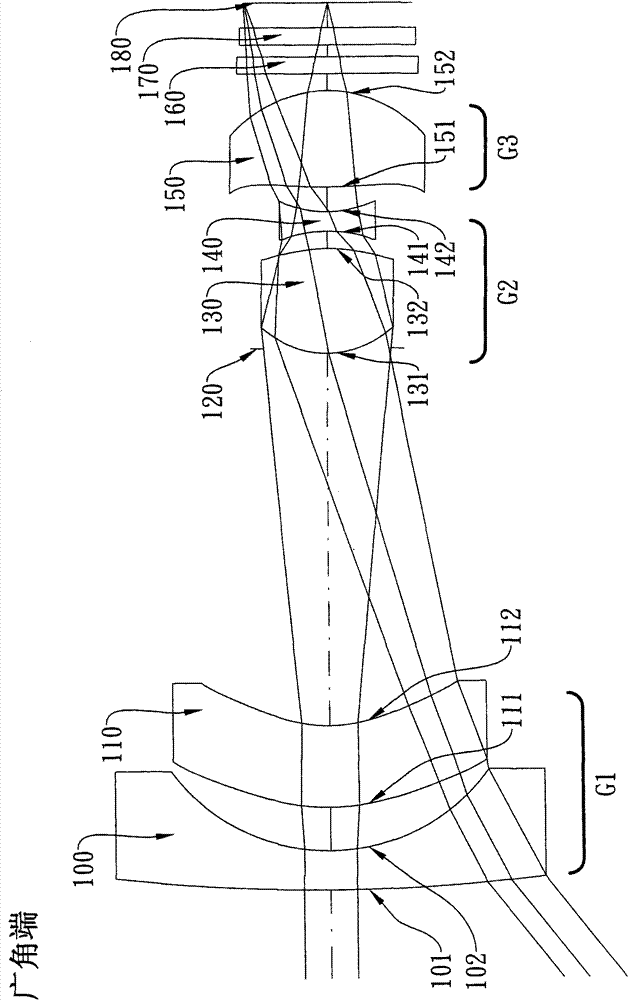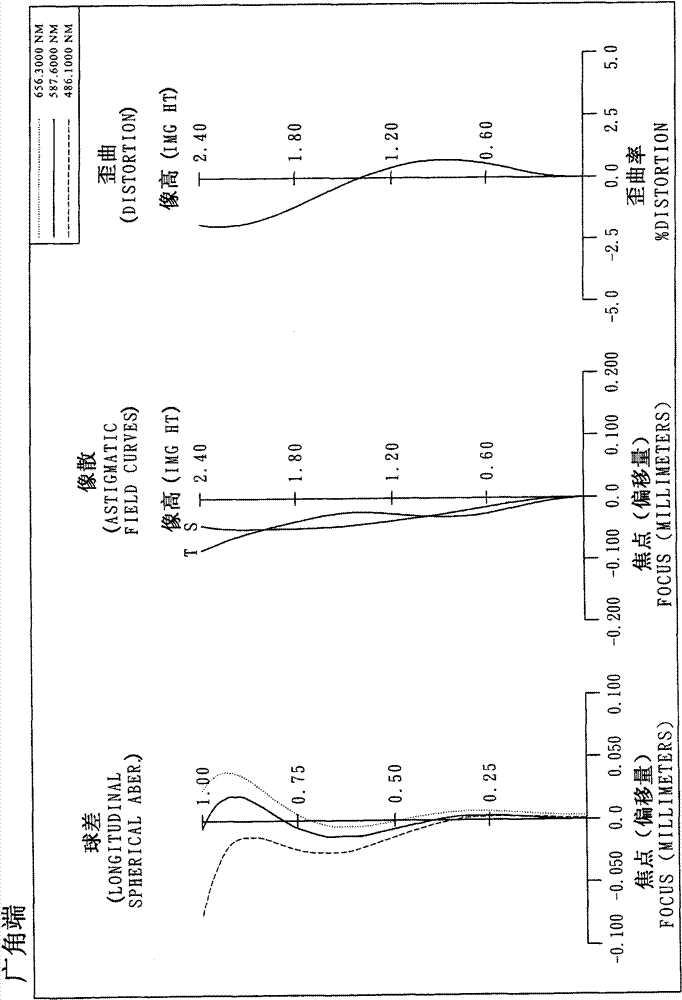Imaging lens with variable focus distance
An imaging lens and focal length technology, applied in optical components, optics, instruments, etc., can solve problems such as inconvenience, and achieve the effect of reducing total length, reducing sensitivity, and correcting chromatic aberration
- Summary
- Abstract
- Description
- Claims
- Application Information
AI Technical Summary
Problems solved by technology
Method used
Image
Examples
no. 1 example 》
[0079] Please refer to Figure 1 A and Figure 1 B for the schematic diagram of the optical system of the first embodiment of the present invention operating at the wide-angle end and the telephoto end. For the aberration curves of the first embodiment operating at the wide-angle end and telephoto end, please refer to the second Figure A and the second Figure B. The variable focal length imaging lens of the first embodiment is mainly composed of three groups of mirrors, which are sequentially included from the object side to the image side: a first group G1 with negative refractive power, and a second group with positive refractive power The lens group G2 and a third lens group G3 with positive refractive power move on the optical axis through the second group lens group G2 to achieve zooming between the wide-angle end and the telephoto end, wherein:
[0080] There are only two lenses with refractive power in the first lens group G1, which include in sequence from the object sid...
no. 2 example 》
[0113] Please refer to Figure 3 A and Figure 3 B for the schematic diagram of the optical system of the second embodiment of the present invention operating at the wide-angle end and the telephoto end, and please refer to Figure 4 for the aberration curves of the second embodiment operating at the wide-angle end and telephoto end Figure A and the fourth Figure B. The variable focal length imaging lens of the second embodiment is mainly composed of three groups of mirrors, which are sequentially included from the object side to the image side: a first group G1 with negative refractive power, and a second group with positive refractive power The lens group G2 and a third lens group G3 with positive refractive power move on the optical axis through the second group lens group G2 to achieve zooming between the wide-angle end and the telephoto end, wherein:
[0114] There are only two lenses with refractive power in the first lens group G1, which include in sequence from the object...
PUM
 Login to View More
Login to View More Abstract
Description
Claims
Application Information
 Login to View More
Login to View More - R&D
- Intellectual Property
- Life Sciences
- Materials
- Tech Scout
- Unparalleled Data Quality
- Higher Quality Content
- 60% Fewer Hallucinations
Browse by: Latest US Patents, China's latest patents, Technical Efficacy Thesaurus, Application Domain, Technology Topic, Popular Technical Reports.
© 2025 PatSnap. All rights reserved.Legal|Privacy policy|Modern Slavery Act Transparency Statement|Sitemap|About US| Contact US: help@patsnap.com



